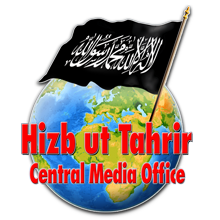
بسم الله الرحمن الرحيم
Women and Education under the Uthmani Khilafah "Caliphate"
During and especially after the destruction of the Khilafah "Caliphate", implementing modernization policies were all too often advertised on the basis of freeing women from the shackles of backwardness. Secular education and its educating system which was viewed as a modern education, was regarded as a fundamental factor in constructing modern nations and required to dismiss and degrade any positive image of the past Islamic lifestyles. The newly founded secular democratic states across the Islamic lands claimed to fight women’s illiteracy by defaming the educational level of women under Islam and in particular the Khilafah "Caliphate" state by labelling women under this system as:
“ignorant mothers, shallow and scheming partners, unstable marital unions, and lazy and unproductive members of society.”
Although within the early centuries of the Uthmani Khilafah "Caliphate" (Ottoman Caliphate), women were not educated within a structured schooling system by the state – which in general was not existent for the men of the society either – women were not deprived of, or forbidden to gain knowledge, or pursue academia, acquire medical skills, or excel in other fields of education. In contrary, the search for Islamic and scientific knowledge was considered a greatly rewardable act for men and women alike.
Within the Uthmani Khilafah "Caliphate", the education and training of children was primarily incumbent upon the elderly, and the parents of the family. Family structures within the Uthmani Khilafah "Caliphate" were constructed upon Islamic values and often at least three generations of the family lived together. In such a structure, knowledge and education were given within the family unit from the elders to the young. Therefore in particular, the education of women in reading and writing, Qur’an, and basic Islamic knowledge, as well as handicraft, household management, and etiquettes and manners was mainly provided in their homes. Additionally, any other skills or professional training was also given within the home.
Islam has always viewed female education as important. The wives of the Messenger (saw) and the Sahabiyyat (female companions of the Prophet (saw)) for example, were leading role models in every aspect of life, including in politics, Islamic jurisprudence, medicine, poetry and knowledge of worldly affairs. Additionally, Islam gave women the right to enter various professions, including to practice as physicians. The Uthmani Khilafah "Caliphate" followed suit. The following example, demonstrates the existence of female physicians under the Uthmani Khilafah "Caliphate".
In the 15th century, a Turkish manuscript on surgery, called Cerrahiyetü'l Haniye of Sabuncuoglu, described female physicians who practiced complicated gynecological operations. They were called "tabibe" or “hekime kadın”, meaning female physician.
Salary registers from 1798-99 show that the hospital at the Harem of Topkapi Palace, called "Cariyeler Hastanesi", employed a female health team, similar to the hospitals of today. A female healer called Meryem Kadin cured the heir of Abdülmecid in the early 19th century. She was awarded a monthly salary and free entrance to the Harem.
The Royal Pharmacy of the Yildiz Palace employed a female physician named "Tabibe Gülbeyaz Hatun", whose monthly salary was "200 akçes" in the year 1872. Female physicians called "morti tabibe" were also employed at the quarantine office.
Lady Montagu, wife of the British Ambassador to the Uthmani Khilafah "Caliphate", described in her letters in 1717, female healers within the state inoculating against smallpox.
Female drug preparers, called "hekim kadin" were invited to the palace and given salaries and Bairam (Eid; Eid ul-Fitr and Eid ul-Adha) presents. Those treating stomach swelling and diarrhea of children were called "Kirbaci Kadinlar", and the "alazci kadinlar" cured the illness called "alaz” (Erysipelas).
Judicial documents dating to 1622 prove that also male patients were operated by two female physicians, one of them known as Saliha Hatun, who operated on a tumor and hernias on 21 male patients.
Furthermore, it is well-known that Ottoman women were not illiterate or uneducated as often claimed. Many of the women even had their own libraries at home. The book that took top place in their homes was the Qur’an. Additionally, biographies of Islamic personalities, important duas, poems about the Prophet (saw), and various history books were some of the main literature contained in their libraries.
Ottoman women who lived and worked in the palaces of the Khalifahs (Caliphs) were able to access a higher level of education. The Harem of the Topkapi Palace for example, contained an elite school for girls, re-known both within and outside of the state for the quality of education it provided its students. Additionally, in the close surroundings of the Palace, where the women who left the Harem school settled after marriage, people could benefit from the knowledge, manners and lifestyle of those women who gained a high level of education within the palace. In addition, people outside the palaces provided their girls education in literature, mathematics, history and even foreign languages, like English, French, and Persian by employing private teachers in their homes, within their financial capabilities.
The fact that education was not only available for women in the palaces, is demonstrated by the example of the last palace teacher, Safiye Ünüvar, who wrote her memoirs of her time in the Harem. Safiye Ünüvar was not educated within the palace, however she was employed by Sultan Reshat in 1915 as a teacher for the girls and women in the Harem. She educated them in Qur’an, Islamic sciences, reading, writing, arithmetic, geometry and physical education. Additionally, Ünüvar reports in her memoires that all the women in the Harem had their own libraries in their apartments, held discussions about the books they read, and were extremely interested in history. The level of education that women in the Harem received can also be understood by the example of the daughter of Sultan Mahmud II, Adile Sultan (1826–1899), who was a renown female Diwan poet, and a philanthropist. Hurrem Sultan, the wife of Suleyman the Magnificent, was also famous for her excellent poems and the brilliant epic style of her letters which were written in eloquent Ottoman Turkish, a language she learned only after entering the palace.
Despite the increasing ideological decadence and the political turmoil within the last 100-150 years of the Khilafah "Caliphate" state, the request for a structured government supported education in the Khilafah "Caliphate" was not left unheard. In particular, Sultan Mahmud II and Abdulmecid I did their utmost in order to establish a profound schooling system for the Ummah.
A structured state schooling system and compulsory school attendance for girls and boys from 5 years till puberty in the ‘Sıbyan’ schools (primary schools) was introduced by Khalifah Mahmut II in 1830. He additionally prohibited the employment of children as well as their apprenticeship with craftsmen before ending school. (Yücel Gelişli) The teachers in these classes were usually the Imams of the neighbourhood or educated women.
However, it was not possible to maintain these new regulations due to different political developments. So in 1845 Khalifah Abdulmecid attempted again to regulate education in primary and secondary schools throughout the Khilafah "Caliphate". Teachers were to be monitored in more detail, the curriculum was expanded and attendance controlled. Lessons in the primary schools (Sıbyan schools) were Qur’an reading, Turkish vocabulary, writing, basics of Islamic faith, ethics (ilmihal), arithmetic, geography, history, and learning the Qur’an by heart, as well as other subjects. During the lessons, girls and boys sat in separate rows in the classrooms. (Yahya Akyüz)
Already in 1778 Shehzade Mehmed, son of Khalifah Abdulhamid I, had opened a school in the Emirgan district of Istanbul. This school provided education after the primary school (Sıbyan Mektebi) for boys and girls, and was named after his mother Humashah Hatun.
In 1783, a girls-only school provided secondary education for girls in Kumkapı, where three female teachers, Hadice, Nefise and Aishe gave lessons. This was followed by the “Tahire Hatun” girls-only secondary school in 1807 in Sirkeci district of Istanbul, two secondary schools in Üsküdar/Istanbul in 1807 and 1811, and the “Şevk-i Nihal Usta” secondary school in 1842. This last one was founded by the Head Treasurer of the Valida Sultan (the mother of the Khalifah). These are just a few examples demonstrating that there existed schools within the Uthmani Khilafah "Caliphate", where only girls, or girls and boys together received education. (Sedat Kumbaracılar)
In these secondary girls’ schools, there was a broad curriculum that included study of the Qur’an and its recitation, Islamic studies, literature, Ottoman Grammar, Arabic, Persian, calligraphy, health, arithmetic, geography, history, handcrafts, and general information about life. Household management was also an important subject taught in these schools. It provided detailed and comprehensive information on a vast array of topics to prepare girls for the Islamic responsibilities they would face upon marriage. This included everything from cooking to home pharmacy, sewing to keeping accounts, and the etiquettes of serving guests to administering medical treatments for simple ailments as well as how to provide adequate nutrition and care for children and the elderly.
“And whether educated at school or in the home, young Ottoman girls were well-prepared for taking up their responsibilities in the household harem. They were equipped with the knowledge and experience necessary for their wifely roles.” (Aslı Sancar, ‘Ottoman Women – Myth and Reality’)
In 1842, the first state-initiated midwife course was opened within the structure of Tibhane-i Amire. Its first graduates consisted of ten Muslims and twenty-six non-Muslims. A few years later in 1858 the first Rushdiyye school (secondary schools) for girls, namely Cevri Kalfa İnas Rushdiyyesi, offering rudimentary religious education was inaugurated by the Ottoman state. In the Rushdiyye school for girls both Muslim and non-Muslim women could serve as teachers - especially for the needlecrafts courses. Furthermore, from 1871 onwards, some of these schools were governed by female administrators. As time passed, existence of the secondary school for girls necessitated the opening of a female teachers’ training school, whose graduates would serve at Rushdiyyes.
Conseguently, Darul Muallimat was opened in 1870. In the same year, another school was offered to female students: the School of Arts and Handicrafts (Sanayi Mektepleri); by instructing occupational courses like carpet weaving, sewing, cooking and embroidery, this school was designed to prepare female students for employment if they so wished. (Çelebi, 2013)
Graduates of these studies were also employed by the state in various fields to serve the people with their skills, including working as translators in various foreign languages. Records also show that women even received grants during their education.
The Uthmani Khilafah "Caliphate" state and its leaders who ruled by Islam, saw it as their Islamic responsibility to provide for the needs of the Ummah. Furthermore, there is no evidence that women were viewed as second-class citizens, or robbed of their right to gain an education, pursue a profession, or use their talents to provide services for the people. Rather their path to gaining knowledge and acquiring various skills was aided and encouraged under the implementation of the Islamic laws. The Prophet (saw) said,
«من ابتلي من هذه البنات بشيء فأحسن إليهن كن له سترًا من النار»
“He who is involved (in the responsibility) of (bringing up) daughters, and he is benevolent towards them, they would become protection for him against Hell-fire.”
Written for the Central Media Office of Hizb ut Tahrir by
Zehra Malik




